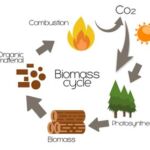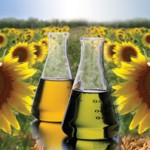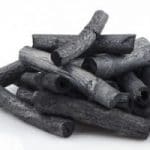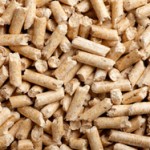
Biomass Power is a renewable energy source. Biomass is organic matter from plants and animals, such as wood, crops, and agricultural waste. When biomass is burned or converted into other forms of energy, it releases the energy that was originally captured from the sun by plants. This energy can be used to generate electricity, heat homes and businesses, or power vehicles

Biofuel production has seen a steady increase in popularity and usage over the last decade, The sustainability of many of the so called first-generation biofuels produced from food crops such as grains, sugar cane and vegetable oils have concern many about their effects on the food-chain, as well as their effects on the environment and climate change. Second-generation biofuels usage of non-food crops, agricultural and forestry residues, by-products and man-made oils significantly reduces these negative impacts making second-generation biofuel production less dependant on fossil fuels

Biochar is a charcoal looking carbon rich substance formed by heating organic biomass plant matter in low-oxygen conditions by a process known as pyrolysis. This biochar can be added to the soil as an amendment and fertiliser to improve soil conditions as well as the sequestation of carbon in the soil to reduce levels of atmospheric carbon dioxide. There are many biomass feedstocks suitable for biochar production but the type of biomass feedstock use in the pyrolysis process will determine the quality and efficiency of the biochar product

Biolubrications, bio-based lubricants and bio-lubes are made from a different variety of vegetable seeds and oils, such as rapeseed, canola, sunflower, soybean, palm, and coconut oils. Biolubricants are used in machinery as a direct replacement for conventional fossil fuel based oils reducing the impact on the environment as a result of leakage during use or in sensitive areas in or around water which can remain contaminated for many years. Biolubricants reduce the impact on the environment and workers due to their lower toxicity levels compared to conventional lubricants and greases

Wood Biomass is a versatile energy source which can be used instead of traditional fossil fuel energy in many energy sectors for providing electricity, heat and transport fuels as well as non-energy useage. The sustainable and optimal use of wood biomass feedstock for energy purposes can also be used in the production of Biofuels and Biogas to help cut our greenhouse gas emissions providing the growing supply of biomass feedstocks can be maintained .

Biogas energy is produced when organic material is fermented under anaerobic conditions and in the absence of air. Organic plant materials, slurry, byproducts, agricultural and food wastes are fermented together in large tanks were they are converted by microorganisms to a combustible gas. Biogas as an energy fuel has the advantage that it is a climate-neutral fuel because it is produced from sustainable energy crops with processed biogas being identical to natural gas for use in cooking, transportation and electrical energy generation

Ethanol based bio-fuel is now becoming the main alternative to using traditional fossil fuels based gasoline in transportation as it can be used to run cars and to power engines, either by itself or mixed with other fuels. Ethanol used as a fuel is the most common form of the range of biomass fuels and oils now available as it can be used to power engines replacing or augment gasoline as a significant source of automotive fuel. Advantages of ethanol is that being made from biomass it is biodegradable and not harmful to the environment. However, ethanol production requires large amounts of agricultural crops and land for its production

Peat pellets made from sphagnum moss has been used as a usuable source of energy for non-fuel applications especially in horticulture as a soil supplement for many years. Sphagnum biomass peat moss grows on degraded peatland and is used as an alternative to non-renewable fossil peat for horticultural applications due to its reduced greenhouse gas emissions. Sphagnum peat moss can be dried and processed in the normal way without any negative impacts on its quality as a growing medium making it ideal for processing into peat pellets. When mixed with other agricultural biomass energy crops, sphagnum moss based peat pellets produce a more compact biofuel pellet

Wood pellets made from compressed wood particles have many advantages as a fuel, they are a local, renewable, and a low-cost fuel alternative. Fuel pellets are made from woody byproducts such as sawdust, wood shavings and off-cuts but can also be mixed together with other orgainic biomass materials to improve their combustion. Using wood particles of a consistant size helps produce pellets of a uniform density. Wood pellets are made by mixing together all these different types of raw wood materials and extruding them at high pressures and temperatures using a pelletising machineproducing a pellet for burning

Biomass energy is the description used for any kind of non-fossil fuel made using organic, biological or plant matter for use as an energy source. Today biomass technologies enable living plant matter such as agricultural crops, seeds, grasses, plants and woody materials to be converted into liquids or gases which can then be used as a clean and green energy source to produce electric power, heat or fuel without directly polluting the environment.